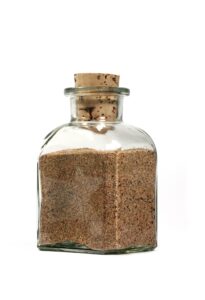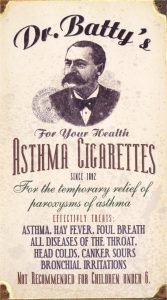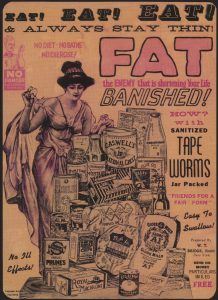Grimstone’s Eye Snuff was widely advertised, purportedly at a cost of £5000 per year to its inventor. Testimonials were often included in the ads, and the product even inspired one satisfied customer to write a poem about it (Quoted in The Champion and Weekly Herald, 3 Feb 1839):
.
From Blackwood’s Lady’s Magazine for May 1838. To Mr. W. Grimstone, on his valuable invention of the Eye-Snuff, made from British herbs, for the diseased organs of the head and eyes:—
Great was the power that did to man impart
Creative genius and inventive art;
The second praise is, doubtless, Grimstone, thine!
Wise was thine head, and great was thy design.
Our precious sight from danger now set free
Wives, widows, fathers, praises sing to thee.
19 Bell-street, Edgware-road, Marylebone. ELIZ. ROBSON
__________________
Here is the advert for today:
SIGHT RESTORED, and Nervous Head-ache
cured—Numerous testimonials and references of the first re-
spectability may be seen at the manufactory, 39, Broad-street,
Bloomsbury, and 24, King-street, Long-acre, proving cataract, in-
flammations, and all other diseases of the eyes and head completely
eradicated, glasses left off after using them 20 years, and the breath
rendered impervious to contagion, by taking GRIMSTONE’s EYE
SNUFF. Thousands have been restored by this delightful com-
pound of the most choice aromatic and odiferous herbs. A fact
too well known to be doubted. Observe the signature of the inventor
on each canister, “with the Patronage of His late Majesty and the
Lords of the Treasury.” Sold in canisters, 1s. 3d., 2s. 4d., 4s. 4d.,
and 8s. each, by almost every tobacconist in the world. All are spuri-
ous that have not the inventor’s signature.
Source: The Times, Saturday 6 April 1833
__________________
Dr. A L Wigan, in his A New View of Insanity (1844) claimed (approvingly) that Grimstone’s snuff comprised nothing but black pepper. He didn’t give any evidence for this, however, and perhaps more reliable is the analysis done by Dr Hassall of the Lancet Analytical Sanitary Commission in 1855, which suggested that it contained a variety of herbs including orris-root, savory, rosemary and lavender, plus a fairly high proportion of salt. There was no actual tobacco in it and so it was not an exciseable article, but the Stamp Office nevertheless made several attempts to prosecute Mr Grimstone for selling it without tax. They also turned their attention to retailers of the snuff, with the result that Mr Grimstone was beseiged by angry stockists demanding that he take back his supplies and pay their fines. In 1850 this left him insolvent with debts of £6000. He did, however, manage to continue selling the snuff and other herbal products until his death in 1862 at the age of 71.




Thank you for a great informative article. We exhibited three display cases of our Quack cure pot lids at the F.O.H.B.C Nationals held in RENO in 2012. While there we purchased a “Grimstone’s Eye Snuff” from a dealer who had dug it many years ago in San Francisco on the construction site of that large tapering tower shaped building?. They said it was once the site of many wooden ship hulks from the gold rush that became a rubbish dump. Cheers Rex barber